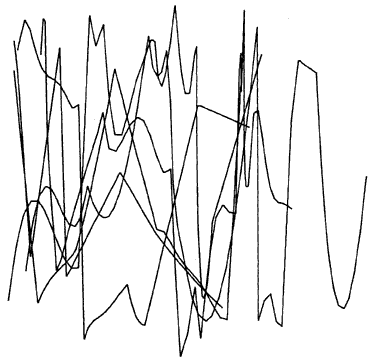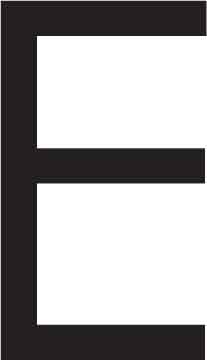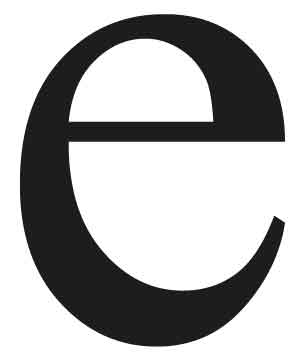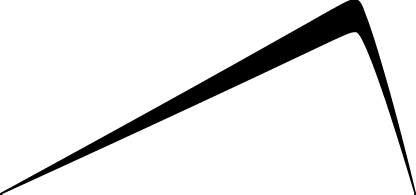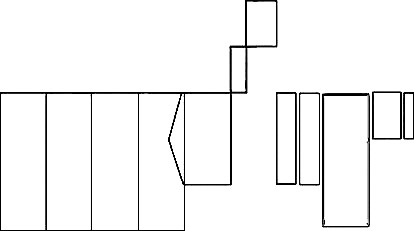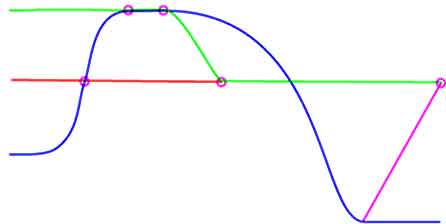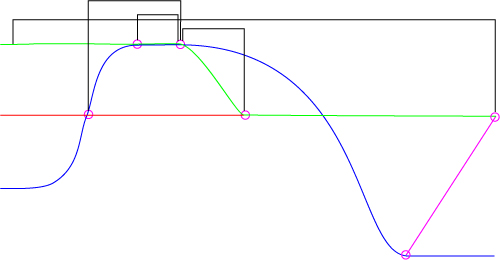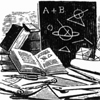
Structural Translations Between Literature and Music
William Gillespie
First I wish to distinguish between translation, interpretation, and encoding. I use structural translation to refer to mapping identifiable formal features from one medium to another. In this respect we can take, for example, the rules of 12-tone music, and map them onto literature, mapping the twelve tones onto the twenty consonants of the English alphabet, and create Twenty Consonant Poetry. This is different from listening to a piece of twelve-tone music and writing a poem about what it makes us feel. I consider feelings an interpretation, different from a translation in that it is wholly intuitive and not verifiable, whearas a translation is a procedure, even if that procedure is subjective. Translation in the traditional meaning, from one language into another, is also subjective. Certain words have a one-to-one correspondence with the same word in another language, but it is unlikely that if you translated a translated poem or newspaper article back into its original language, you would end up with the same phrasing. Such a procedure, an exact translation, I would call encoding, as with the alphabet and Morse Code.Although this essay is focused on translating literature into music, I will point out some examples of translating music into literature. I have mentioned Twenty Consonant Poetry as an example of a compositional technique used in writing poetry but borrowed from music. Twenty Consonant Poetry often employs a musical structure used in, but not limited to use in, serial music techniques: the retrograde. In music, a retrograde is a melody played in reverse. In literature, you might find analogies to the musical retrograde technique in the palindrome (mapping notes onto letters), or reverse chronology (mapping notes onto story events). An impressive example of a translation of a specific piece of music into literature can be found in Richard Powers's novel The Gold Bug Variations.
Most of the techniques for translating literature into music in this essay involve a double translation--translating literature into visual art then translating this visual art into music. One reason I do this is to make use of a program called Hyperupic, written by Christopher Penrose, which is able to translate visual art (a graphic file) into music (a sound file).
The composer Herbert Brün used computer generated visual art as scores for performers of music to follow. Here is one of Herbert's graphics. Click on the graphic to hear Hyperupic's performance of it.
But there is more to the use of visual art here than a means to take advantage of this software. First, music is conventionally notated as visual art in the form of musical scores, written using established conventions that existed for centuries before recording technology or software. While composers have dabbled in numerous forms of unconventional notation, it is so common as to be intuitive that time maps from left to right, and pitch from bottom to top. This is the mapping I will use in all the examples below. Second, a direct translation of literature (text) into music, without using visual art, would likely involve mapping the alphabet onto pitches, or mapping words onto pitches, but human intervention is arguably necessary in order to create a piece of music based on the meaning of a text.
Examples of visual notation for literature are not common. But they exist. In S/Z, Roland Barthes proposes a mapping between conventional music notation and aspects of fiction. In 446, Thomas Disch provides a three dimensional schematic of a long short story, charting character, time, and setting. In Oulipo: A Primer of Potential Literature, Italo Calvino offers a diagram of the structure of his novel If on a winter's night a traveler.
But let's begin with what is perhaps the most familiar mapping of all: the alphabet.
Here is what the letter E sounds like without serifs (Century Gothic). If you click on the letter below you will hear, with time moving from left to right, and the top of the image being the higher pitches, a harsh discord, followed by a triad.
Here is the letter E with serifs (Times New Roman). Serifs add melodic flourishes.
Serifs look and sound better.
Because vertical lines produce a harsh discord, while parallel horizontal lines produce harmonies, let's listen to the lower case letter e (Times New Roman), which has no vertical lines.
Here is a newspaper headline mapped onto music. I used Flash to put the music with the scrolling headline, but it appears to run at different speeds on different browsers.
This is the word "mixolydian" written as a score for Hyperupic, and translated into the mixolydian mode.
Beyond writing words, there are other ways of translating literature into visual art. In old school poetry references, such as Turco's Book of Forms, patterns of stressed and unstressed syllables in poetry are indicated with typographic symbols. Here is a line of Iambic pentameter: five repetitions of an Iamb: an unstressed syllable followed by a stressed syllable.
As this diagram refers to acoustic properties of the language, it is already a form of musical notation, mapping low and high volumes onto the period and apostrophe respectively. Thus when I translate this diagram into music it sounds like a bad recitation of verse.
So far we have heard mappings of typography and phonetics onto music. Let's listen to various mappings of meaning onto music.
The most frequently taught diagram of a text must be the plot curve, derived from Freitag's Plot Triangle. This diagram demonstrates the arc of a well-told story, with time mapped from left to right and the vertical axis indicating rising and falling tension. Click on the graphic to hear what it sounds like.
While the vertical axis in the music refers to frequency, a quantifiable aspect of sound, the vertical axis of ttext measures the highly subjective dramatic "tension" of the story. In order to locate the tension of the story, you have to read the story and interpret it, and interpretations are likely to vary. Dramatic tension exists in the reader, not in the text.
It is interesting that the shape of a well-told story as depicted here is similar to the shape of a well-written piece of tonal music, with progression away from and return to the tonic, dramatic tension analogous to dissonance.
In Five Variations on a Plot Curve I experiment with telling the same events with different plot curves. Click on the graphics to hear each variation.
Here is a sketch of the essay "Lush Life" by David Rakoff with a sense of alienation mapped to the vertical axis, the horizontal axis showing progression by page.
In "Order, Duration, Frequency," Gérard Genette describes the structure of the opening of Proust's A la recherche du temps perdu in the following manner:
Proust's story moves through time from left to right. Each rectangle is a scene. The width of the rectangles indicates how much story time they cover, the height of the rectangles indicates how many pages the scene lasts. The gaps between the rectangles indicate increasingly long ellipses: unnarrated periods of story time. Thus, as the story progresses, increasing numbers of pagges are spent on shorter and shorter scenes. This diagram uses time as both X and Y axes, the X axis corresponding to fictional time in the story world, the Y axis corresponding to time in the reader's world. So, in the music, more pitches means more pages.
Finally, here is the Hobo Story.
Stay tuned to this website for the forthcoming Structural Translations Between Print and Electronic Literature.
here > there
